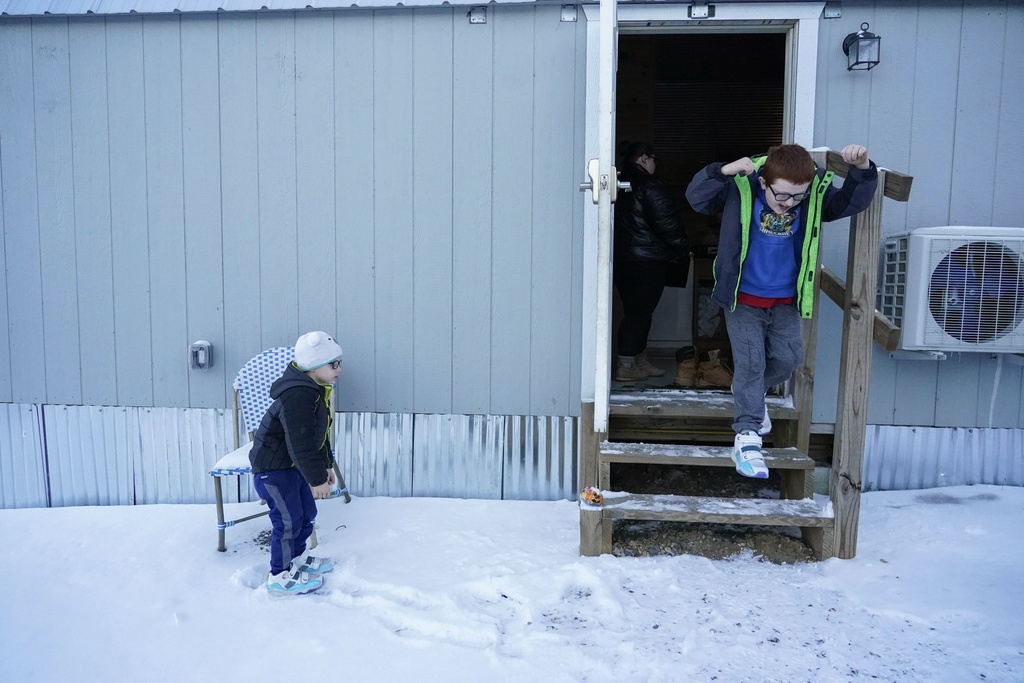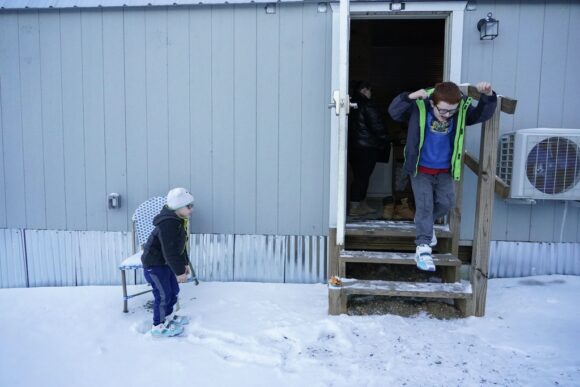- Home
- About
- Insurance
- Quote
- Dental/Health
- Service
- Notary
- News
- Referral Partners
- Agent Resources
Two Years After Deadly Tornadoes, Some Kentucky Families Still Waiting for Housing *Centurion Insurance AFS*

[ad_1]

MAYFIELD, Ky. (AP) — Ashley Prince and her family have been chasing “normal” for years now.
Two years ago, the tornado that whipped through Mayfield peeled the roof off their rental property “like a band-aid.” She and her fiance Dylan watched from inside as the mile-wide storm knocked over the water tower behind their house, sucker-punching her in a rush of rapids. The ordeal left her with a severely injured leg.
What came next was a monthslong journey to put their lives back together. That meant about a year spent with Ashley’s parents, then a year in temporary housing, where they currently live.
It’s the kind of story that disaster experts say will only become more common as climate change multiplies and intensifies instances of extreme weather. Academics point to a relief system in the United States that is relatively well-equipped to get aid out in the immediate aftermath of disasters, but is not designed for the long-term or the worsening conditions wrought by global warming. Stacked on top of that crisis is another intractable problem: the dire lack of affordable housing across the country.
That landscape makes people like the Princes — low-income renters — among the least prepared for the climate future that is to come. Using flooding as a case study, research from MIT has shown that disasters lead to increases in rental prices for renters with low incomes and to increases in evictions.
“People are not prepared to think about a potential disaster when they’re living in a precarious situation on a day-to-day basis,” said Smitha Rao, an assistant professor at Ohio State University who worked on the front lines of disaster relief before studying it.
After a disaster, families typically have a few options to rebuild, said Michelle Meyer, an associate professor and director of a hazard reduction and recovery research institute at Texas A&M University. If they have homeowners’ or rental insurance, they can file a claim with the company. Then there are sources of financial assistance from the Federal Emergency Management Agency, which just last month changed its application process with the intention of making their grants more accessible.
At the same time, families can apply for loans from the U.S. Small Business Administration, but applicants must meet eligibility requirements and pay the loan back. In addition, local community organizations often provide meals, clothes and other assistance, sometimes for weeks or months after the disaster.
Housing Shortage or Not, Mayfield Offers Incentives to Relocating Remote Workers
While some tornado victims struggle to find affordable housing, the city of Mayfield and Graves County have launched an incentives program designed to attract remote workers to the area.
“We might have been struck by the largest tornado in Kentucky history, but we are proving to the world that we are a resilient people, and we’re back from the brink,” Mayor Kathy O’Nan said in a news release this month.
The pilot program, done in partnership with an online marketplace service, offers $5,000 in cash for people who relocate to the county, along with discounts on childcare, season tickets to local high school sports events, YMCA membership, lunch with the mayor and a monthly gift of a dozen locally sourced eggs.
Recruiting remote workers has become many communities’ favored economic development strategy in recent years, according to MakeMyMove, the online marketplace that connects remote workers with communities offering relocation incentives.
Because remote workers bring their jobs and families with them, they add to population and tax base growth; they buy homes, purchase insurance, enroll their kids in school, take part in local activities, the release noted. More than 40 million Americans are expected to be fully remote in the next five years.
But once those programs start to wane, by the one- or two-year mark, many families are still nowhere near recovered. Volunteers and local organizations fill the gaps with extended temporary housing and new permanent housing. But they, too, face challenges, as volunteers are spread thin.
In Mayfield, some programs have made progress on a few dozen homes, which families have started moving into. But the tornado destroyed hundreds of houses, hitting rentals hardest.
Helping families regain their independence is part of the mission of Camp Graves, the nonprofit providing temporary housing where the Princes now live.
But people in vulnerable populations are especially at risk of losing out on those opportunities. All of the seven families currently on the wait list for Camp Graves are Hispanic, Black, multiracial or include a single parent, office manager Cassy Basham said. In addition, residents with existing medical conditions or disabilities say they have faced additional challenges finding accessible housing.
Experts say the intersections of affordable housing and climate change can be felt everywhere. Mennonite volunteers working on housing in Mayfield saw that firsthand, describing previous experiences in hurricane-prone areas of the South, where they repaired leaky roofs that were covered with tarps in some cases for as long as two years.
In the meantime in Mayfield, though, temporary housing is a safe haven for many. On a snowy day this January, Ashley sat at the kitchen table with her kids, helping them with assignments. It’s the kind of moment they hope to have more when they become homeowners. The Princes are currently waiting to find out if they will get approved for a permanent house being built by The Fuller Center for Housing, a nonprofit that helps build and repair homes for people who need them, at little or no cost to the families.
In the meantime, though, the Princes find joy in the little things. A taller artificial tree for this Christmas. A separate bedroom for the kids and a new coffee pot. And time together.
That, after all, is the normal that matters the most.
Photo: Hunter Prince, right, leaps out of his family’s temporary home as his brother, Waylon, watches, in Water Valley, Kentucky. (AP Photo/Joshua A. Bickel)
Copyright 2024 Associated Press. All rights reserved. This material may not be published, broadcast, rewritten or redistributed.
Topics
Catastrophe
Natural Disasters
Windstorm
Numbers
Kentucky
[ad_2]
Source link







Comment (0)